| Prev | ICM User's Guide 15.3 Molecular Editor | Next |
[ New | Right Click Options | Chemical groups | Adding fragment | Property Monitor | Key chemical | Save/Append | Edit | Selections | Copy/Cut/Paste | SMILES | Undo/Redo | Isis ]
Draw new compounds by using the ICM Molecular Editor.
The molecular editor can be activated by:
- Clicking on the Open ICM Molecular Editor button shown below.
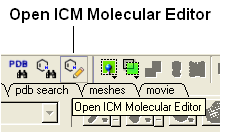
OR
- Select Chemistry/Molecular Editor and the editor as shown below will be displayed.
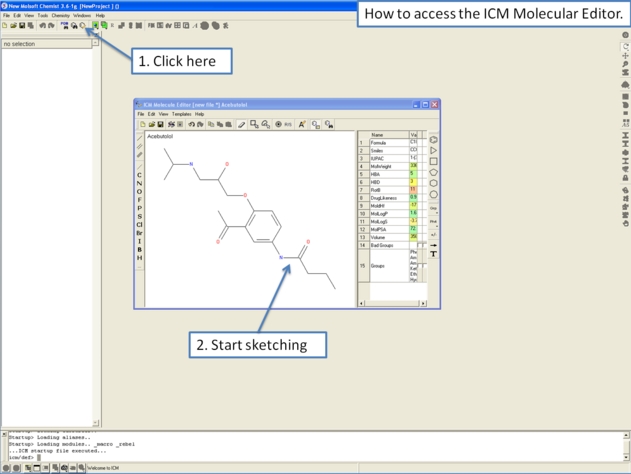
15.3.1 Drawing a New Chemical Structure |
To draw a new chemical structure the ICM Molecular Editor should be loaded.
To do this:
- Select Chemistry/Molecular Editor
Now you can start drawing your structure.
- First select one of the appropriate buttons on the left hand side of the molecular editor.
- Then click in the white Molecular Editor Workspace and your element, ring or bond will be displayed.
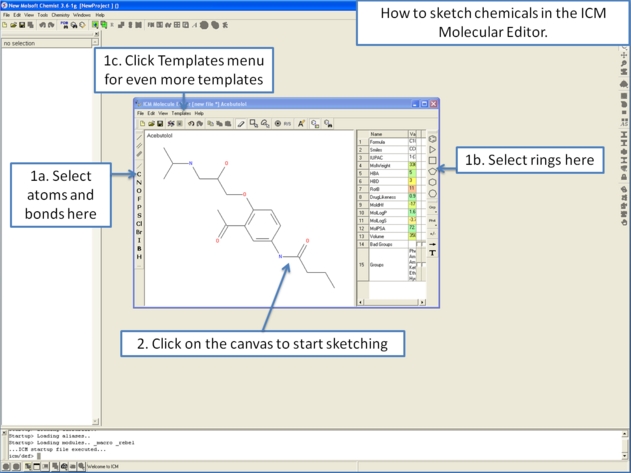
- You can extend your structure by selecting another button from the left hand-side as before.
- Select where on the structure you would like to add the new group by hovering the mouse over the desired position. The position you will add to will be highlighted in a red box.
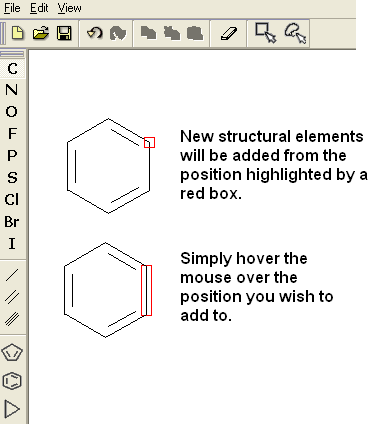
To change the direction of a bond:
Carry on drawing until your structure is complete! See the other sections in this chapter.
There are a number of different options available when you right click on a bond or atom. These options are described in detail in the Chemical Searching part of the manual.
The ICM Chemical Editor has a dictionary of chemical groups. These groups are stored in a table stored in CHEM_GROUPS.csv file.
This file can be manually edited to remove or add new definitions. The group can be selected using the Grp button
of the Editor.
The Chemical Editor allows one to add bonds (click the bond button), or chemical groups (the Grp button),
Often one needs to re-orient the added bond or fragment.
In this case press on the atom to which you are going to append the bond or the fragment and hold-and-drag the mouse
it until you see added fragment rotating around the attachment point.
While you keep the mouse button pressed you can rotate by dragging in the preferred direction.
If you add templates (the Templates menu, or paste fragments, the mechanism is somewhat different because
the group is added in its default orientation. In this case you can press Ctrl to rotate the fragment to
to be able to attach the fragment in the desired orientation.
When drawing a compound in ICM you can monitor important ADME-Tox and drug-likeness properties.
To view the drug-likeness monitor
The following properties are monitored.
The rows in the monitor window are colored from green (good) to red (poor) ADME-Tox properties.
You can select a fragment or simply position your mouse cursor over a bond or atom and use the following keystrokes
for editing:
Once you have drawn a chemical structure (see Drawing a New Chemical Structure) then you can save the structure in the following ways:
To save the structure as a MOL or SDF file on your machine or server.
To append the structure to an already created sdf file.
To append your structure to an ICM table:
OR
If you make a mistake whilst drawing a chemical structure or if you wish to change an already saved and loaded structure there are a number of editing
tools and techniques which can be used.
To edit a structure which is in a loaded ICM molecular table:
To edit a bond or atom in the structure:
To delete parts of a structure:
Alternatively you can select the delete option in the ICM Molecular Editor "Edit" menu.
Selections can be made in the ICM Molecular Editor using the two buttons shown below.
Selections are displayed in green.
To copy, cut and paste part or all of your structure.
The copy and paste buttons and menus are shown below:
To copy your structure as a smiles string:
C1C=CC=C(C=1C(C)=O)CC(CC=C1)=C1
This will place the SMILES string on the clipboard which can then be pasted into any application.
Molecules drawn in ICM can be cut and pasted into ISIS-Draw and vice-versa molecules from ISIS-Draw can be cut and pasted
into ICM.
To perform these functions the correct settings need to be turned on in ISIS-Draw so that the compound drawing is saved in the clipboard.
IN ISIS-DRAW - Go to Options/Settings/General/Copy Mol Rxn file to the clipboard.
Compounds drawn in ISIS Draw can be cut and pasted into the ICM Molecular Editor and into ICM tables. Compounds can be copied in ICM by:
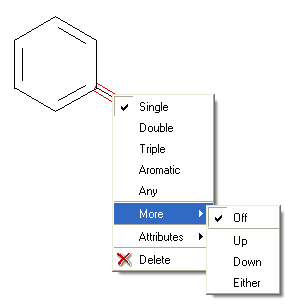

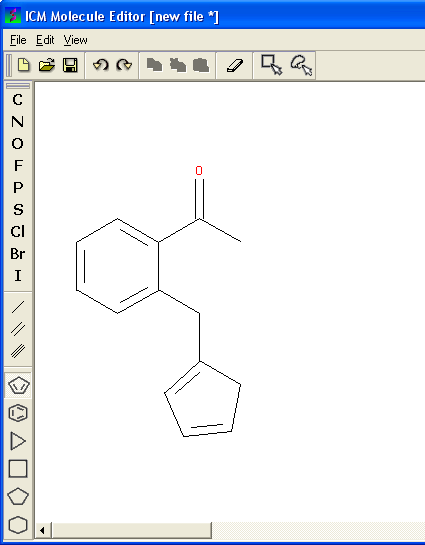
15.3.2 Right Click Options
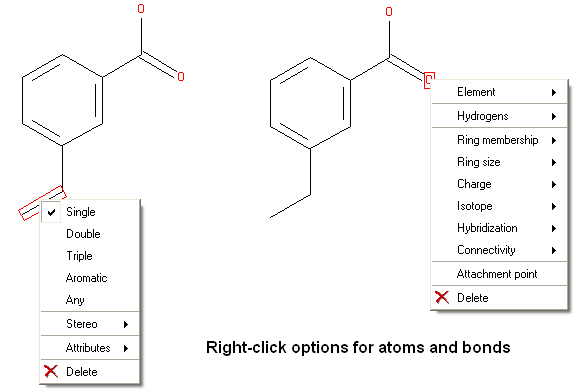
15.3.3 A dictionary of chemical groups.
15.3.4 Adding and rotating a fragment in molecular editor by clicking-holding-and-dragging.
15.3.5 Property Monitor

15.3.6 Editing structure using keyboard
15.3.7 Save and Append Chemical Structures
NOTE: Other save options can be found on the ICM Molecular Editor Toolbar.
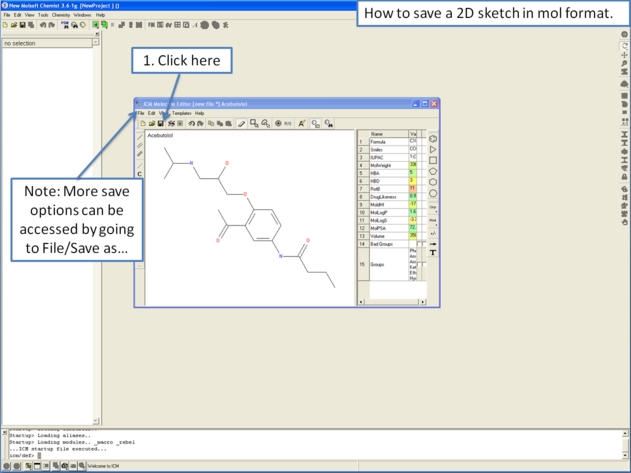
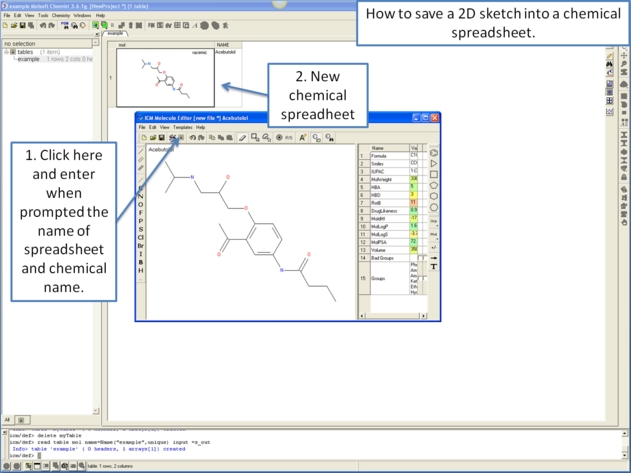
NOTE: For more information on how to manipulate standard ICM Tables and Molecular Tables see the Table section of this manual.
15.3.8 Editing a Chemical Structure
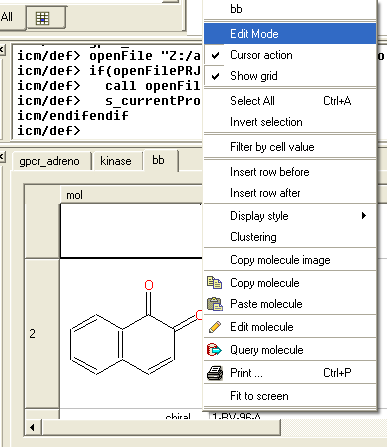
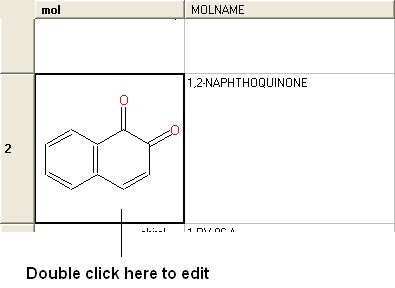
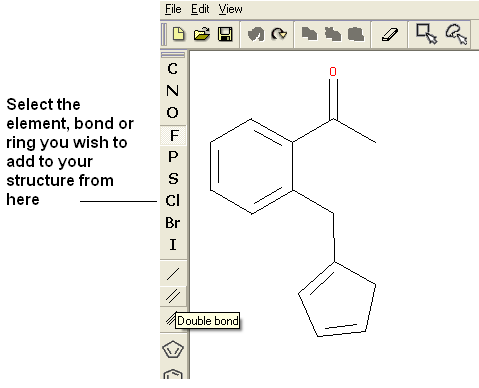
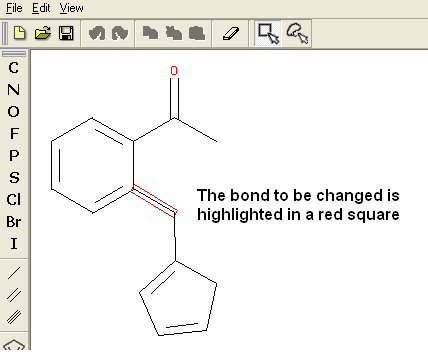
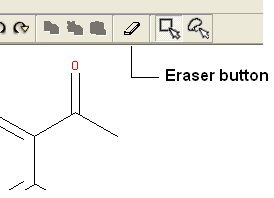
NOTE: A quick image can be constructed using the camera button A quick image can be constructed using the camera button as described in the TIPS section of this manual .
15.3.9 Molecular Editor Selections
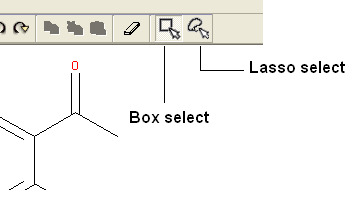
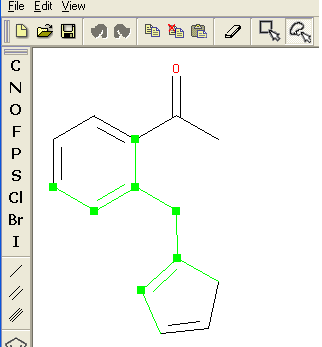
15.3.10 Copy, Cut and Paste
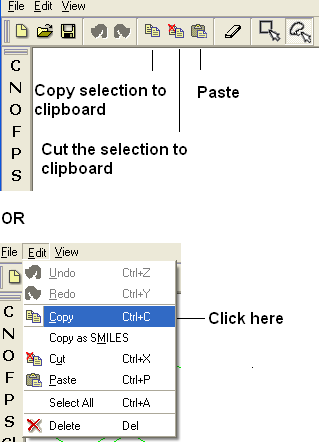
15.3.11 How to use SMILES strings to sketch a chemical.
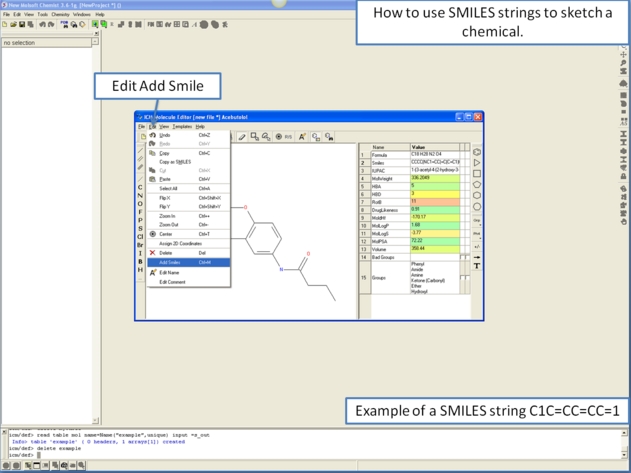
15.3.12 Undo and Redo
The undo and redo options for the ICM Molecular Editor are located in the Edit menu and on the toolbar
as shown below.
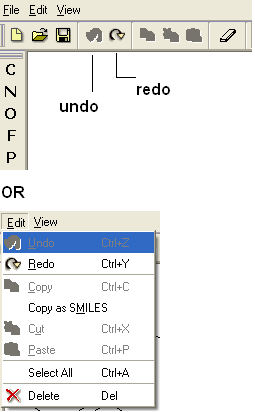
15.3.13 Isis Draw Copy and Paste
Prev
Color ChemicalHome
UpNext
Extract 2D